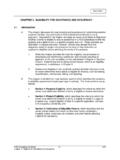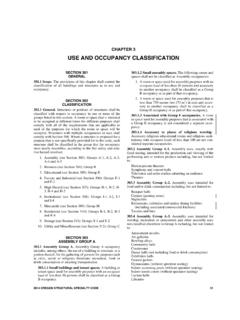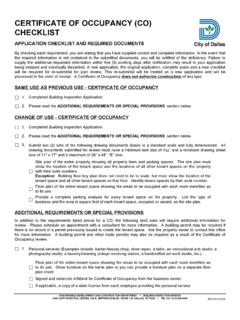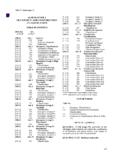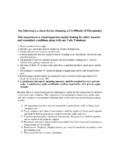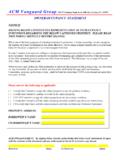Transcription of OCCUPANCY CALCULATIONS - Humberside Fire & Rescue …
1 OCCUPANCY CALCULATIONS The following information has been extracted from the CLG guide for Fire Safety Risk Assessment in Small and Medium Places of Assembly under the Regulatory Reform (Fire Safety) Order 2005 (this guide is available to download free from ) and Build Regulations approved Document B (ADB). The OCCUPANCY figure for any building is based on the lesser of the two following CALCULATIONS ; the number of persons who can safely reside in the premises (using the floor space factor may assist in working this out) and the width and capacity of the exit routes to allow them to escape safely. Floor space factors Floor space factors may assist you in working out the maximum number of persons who may safely reside in the premises and are based on the following table is taken from Building Regulations ADB (only calculate for the main function areas.)
2 Take care not to include stairs, exit routes (corridors), toilets, plant rooms etc.) Type of accommodation M2 per person Standing areas, Bars without seating Assembly Halls, Dance floors, Concert events Dining rooms, Seated Lounge/Bar, Restaurants Where you have fixed seating then the maximum numbers of people in the Hall, Bar or Restaurant will be known from the number of seats provided. If you are providing temporary seating then this may be limited by the maximum numbers your escape routes can accommodate. Bar area of 100m2 = 300 persons and 50 seats around the side of the room total OCCUPANCY = 350 Widths of escape routes and exits Minimum width for an escape route should ideally be 1050mm but in any case not less than 750mm and where wheelchair users are likely to use it not less than 900mm. The premises fire risk level will be obtained from your fire risk assessment (use medium risk if you are not sure of your premises risk level).
3 Minimum width on escape route or exit Premises Fire Risk level & Persons 750mm 1050mm Low risk = 120 persons Medium risk = 100 persons High risk = 80 persons 1050mm Low risk = 240 persons Medium risk = 200 persons High risk = 160 persons Over 1050mm every 75mm = +15 persons regardless or risk level When calculating the exit capacity you must remember to discount the largest exit or exits if they are close together (see example below), as they may be unavailable due to the fire. Then add together the number of persons who can safely use the remaining available exits. Exit A (1200mm wide) = 200 + 30 (150mm over 1050mm) = 230 persons, Exit B (900mm wide) = 100 persons and Exit C (850mm wide) = 100 persons. Discount the largest Exit (A) then total exit capacity is Exit B + Exit C = 200 persons Note: An OCCUPANCY limit of 60 persons will apply where only one exit exists and 60 persons is the limit for an exit where an exit door opens inwards (unless that door is fastened open).
4 Other guides are available which may also assist in calculating a safe and accurate OCCUPANCY figure for fire safety in buildings Building Regulations, BS 9999. FOR LISENCED PREMISES BE AWARE THAT ANY FIGURE ARRIVED AT MAY BE VARIED AS A CONDITION OF YOUR LISENCE BY THE FIRE AUTHORITY OR OTHER STATUTARY CONSULTEE Example calculation for OCCUPANCY figure Using the floor space factors the number of persons that the plan premises can safely hold is 450. Using the exit width CALCULATIONS (without discounting an exit) exit capacity is 700. Finally calculate the total exit capacity after discounting the largest exit (or exits in the case of ones that are close together) as the fire may affect an exit, in this case 2 exits for 200 persons each are close together so their total is discounted 700 400 = 300 persons total exit capacity.
5 Although the premises can hold 450 persons the exits only have the capacity to allow 300 to escape safely, so the OCCUPANCY for the plan premises is 300 persons.


